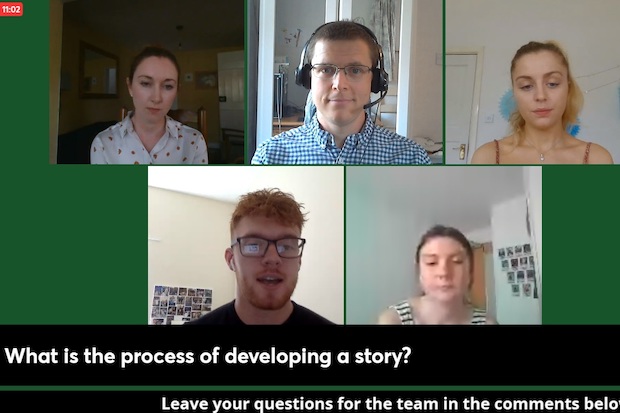
Nottingham Trent University BA Journalism second year students Katie Green, 20, and Jack O'Connor who worked on the #AskNottsLive project
Instead of taking it slow during the summer months, NottinghamshireLive created a collaborative project with Nottingham Trent University's (NTU) Centre for Broadcast and Journalism (CBJ) to answer its readers' questions.
The #AskNottsLive initiative, run by MA news journalism course leader Jonny Greatrex, was inspired by a Journalism.co.uk podcast with Jennifer Brandel, co-founder and CEO of Hearken. In the episode, Brandel spoke about her experience with participatory journalism while working at WBEZ Chicago.
"I’ve been fascinated by Jennifer Brandel's approach ever since hearing that podcast and have finally got the chance to try it by partnering with a regional publisher," said Greatrex.
Four NTU students - Katie Green, Jack O'Connor, Isaac Seelochan and Ellie Danemann - worked on stories suggested by the NottsLive readership, which provided them with an invaluable experience. The project was funded through a research bursary from the Association for Journalism Education.
To get a sense of what the community cares about, the publisher added a widget on its website that allowed readers to suggest a topic and leave their contact details for journalists to get in touch.
These tip-offs led student journalists to investigate anything from local shopkeepers blighted by dog mess and graffiti, to a man receiving shockingly poor treatment at Nottingham hospital.

#AskNottsLive Facebook Live session. Picture clockwise: Natalie Fahy, Jonny Greatrex, Ellie Danemann, Katie Green and Jack O’Connor
"It was a steep learning curve for the students," said NottinghamshireLive senior editor Natalie Fahy. Working on sensitive stories like the one about hospital care required a thorough investigation and input from lawyers.
The real-life newsroom experience was also valuable for students who often struggle to get a response from the council or the police. Reporting for the local paper, however, opened doors and inboxes.
Community stories were not all doom and gloom. For instance, O'Connor wrote about local allotments that provided Nottingham gardeners with a much-needed space to relax during the pandemic, while Green spotlighted a team of local volunteer litter-pickers.
The impact of the project has been positive, according to Fahy.
"It was reassuring to see that we are already producing the kind of stories that the readers were asking for," she said, adding that getting the audience involved increased their interest in the articles.
Importantly, opening up a newsroom to the public did not lead to a deluge of abuse that so many local journalists are experiencing.
We need to ask the audience for their opinions more often and not be afraid of that.Natalie Fahy
Fahy was at first worried that readers will not respond or that they will see the initiative as journalists being "lazy and have no ideas of their own. But it didn’t happen."
Although the publication did not specifically measure the impact of the people-powered stories on audience metrics, they generally performed well and also generated a lot of buzz on social media, prompting people to share their own experiences. The team also organised Facebook Live sessions to answer questions from the audience.
"There is a lack of understanding from the audience about [news-gathering]," said Fahy, who realised how important is to be more transparent about how news stories come to life.
"People think we are cowboys," she joked, adding that this project showed the journalists that they can ask the audience for sensible story suggestions and get them.
"We need to ask the audience for their opinions more often and not be afraid of that."
Free daily newsletter
If you like our news and feature articles, you can sign up to receive our free daily (Mon-Fri) email newsletter (mobile friendly).
Related articles
- How NRK uses AI-generated summaries to boost younger readers’ engagement
- Protecting independent journalism, with Lexie Kirkconnell-Kawana of IMPRESS
- Five key takeaways from the UK select committee on the future of news
- The first UK local news publisher gains charitable status
- Covering elections: how to not let politicians steal the narrative









